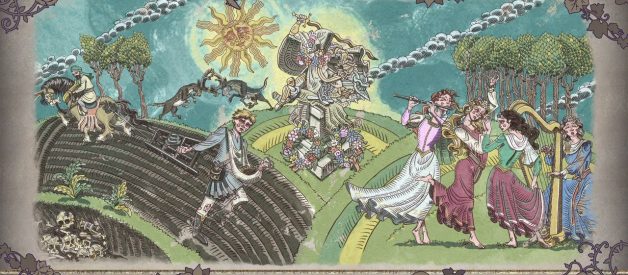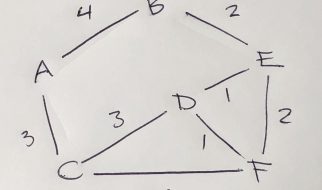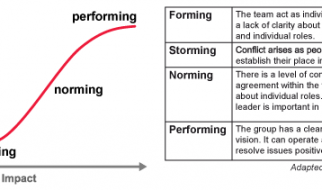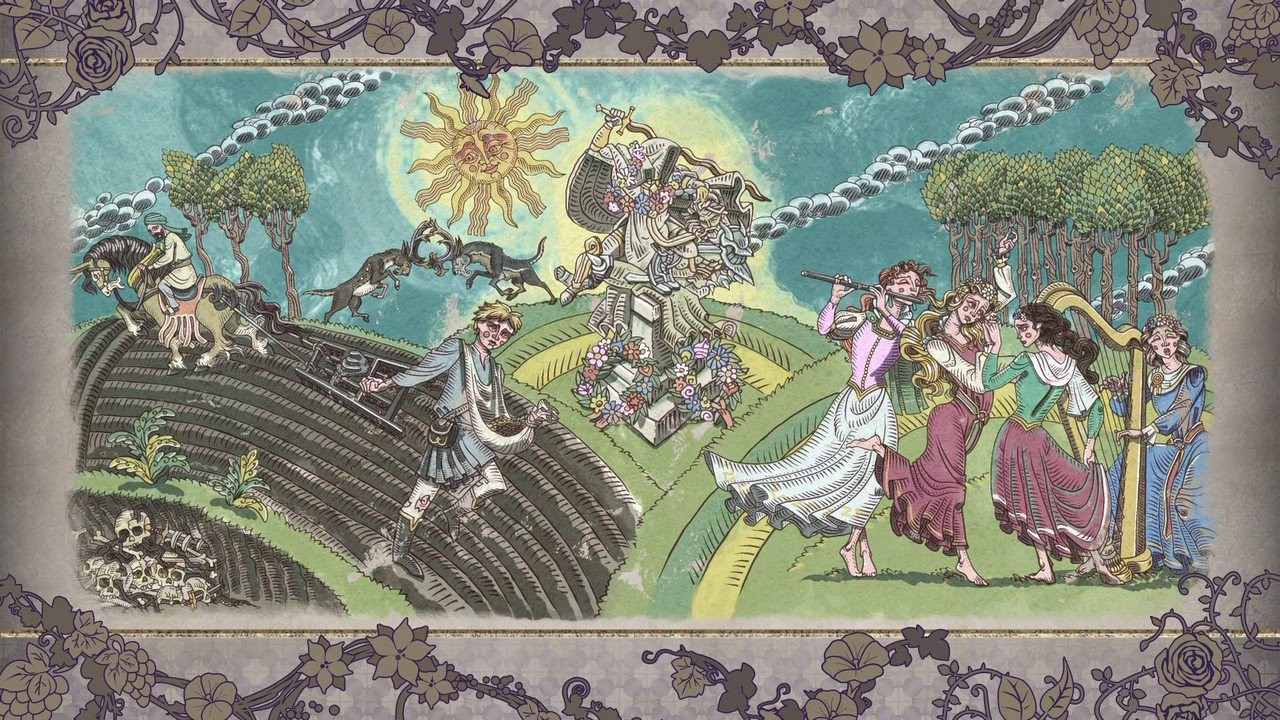
It is safe to say that the latest entry in the Fire Emblem series, Fire Emblem: Three Houses, has captured people?s imagination. Even a quick glance at my timeline features a wealth of fan art, jokes, and memes. But while most of the attention has been (rightly) directed at its fantastic characters, I have not seen much talk about Fire Emblem: Three House?s incredible original artwork.
Some context: the action of Fire Emblem: Three Houses is structured around calendar months. At the beginning of each month, the player is greeted with an original piece of art depicting the month in question. As the narrator leisurely describes the seasonal activities characteristic of that month, the camera pans and focuses on specific scenes within the picture, before zooming out at the end of the narration. These compositions are very classical in orientation, and draw on a tradition of ecphrasis going all the way back to Homer. Ecphrasis, for people who are not literature geeks, is a long extended description of a scene, often, but not necessarily, of a piece of art. The prototypical ecphrasis in the Western tradition is the long description Homer provides of the shield of Achilles in the Iliad. Remarkably, Achilles? shield, a weapon of war forged by Hephaestus himself, features not terrifying monsters that scare the enemy (as shields are supposed to) but an idyllic portrait of everyday life in Homer?s time, with beautiful descriptions of a farmer plowing his field, a trial by the community, viniculture, and youths dancing. We see a similar framing here in Fire Emblem: Three Houses. In a game about war, death, and high intrigue, the art between chapters focuses on the everyday activities of peace time. These pieces of art emphasize the cyclical, timeless nature of Fdlan; even as the country will be radically reshaped by the events of the game, everyday people will fight for survival in much the same way as their ancestors.
I will stop typing for a minute and let the images speak for themselves. One note: because there is no ingame gallery for this wonderful art, I had to rely on the capture button on my Switch. Therefore these pictures have some irregularities between them, as the screen capture caught whatever level of zoom was on the screen at the time. Also I accidentally captured text in one image, and I am not going back to fix it.

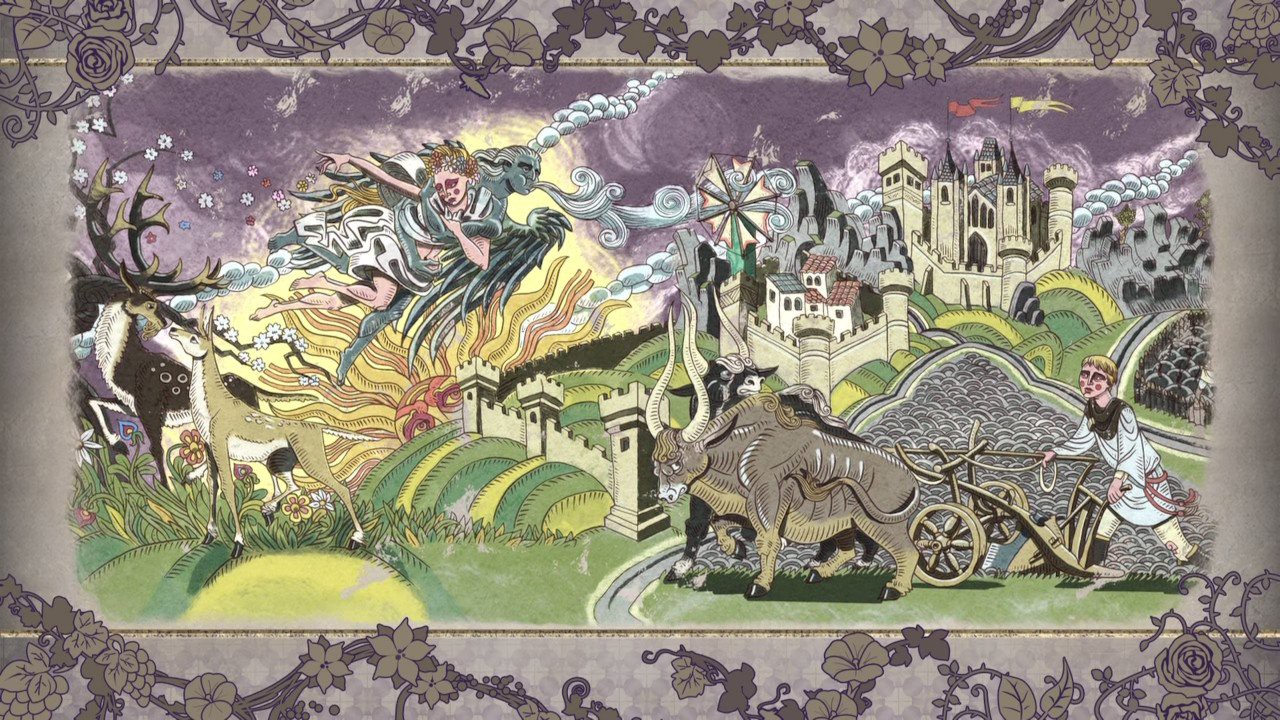
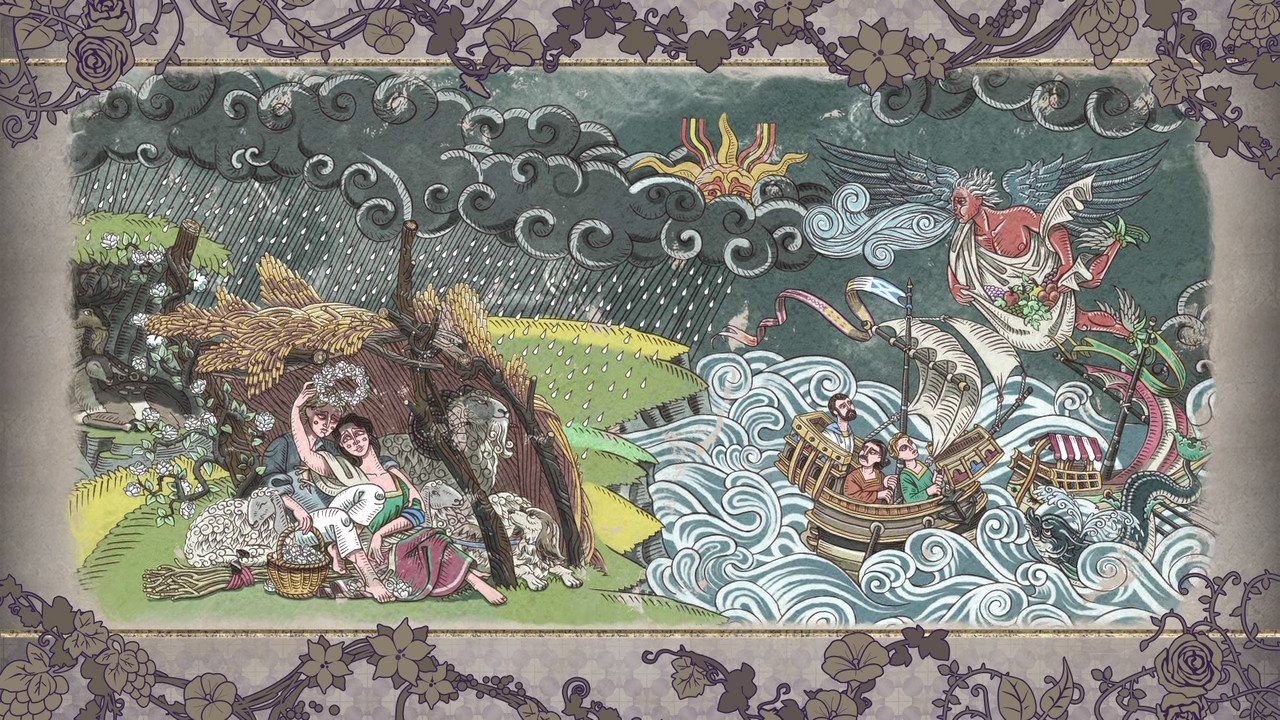
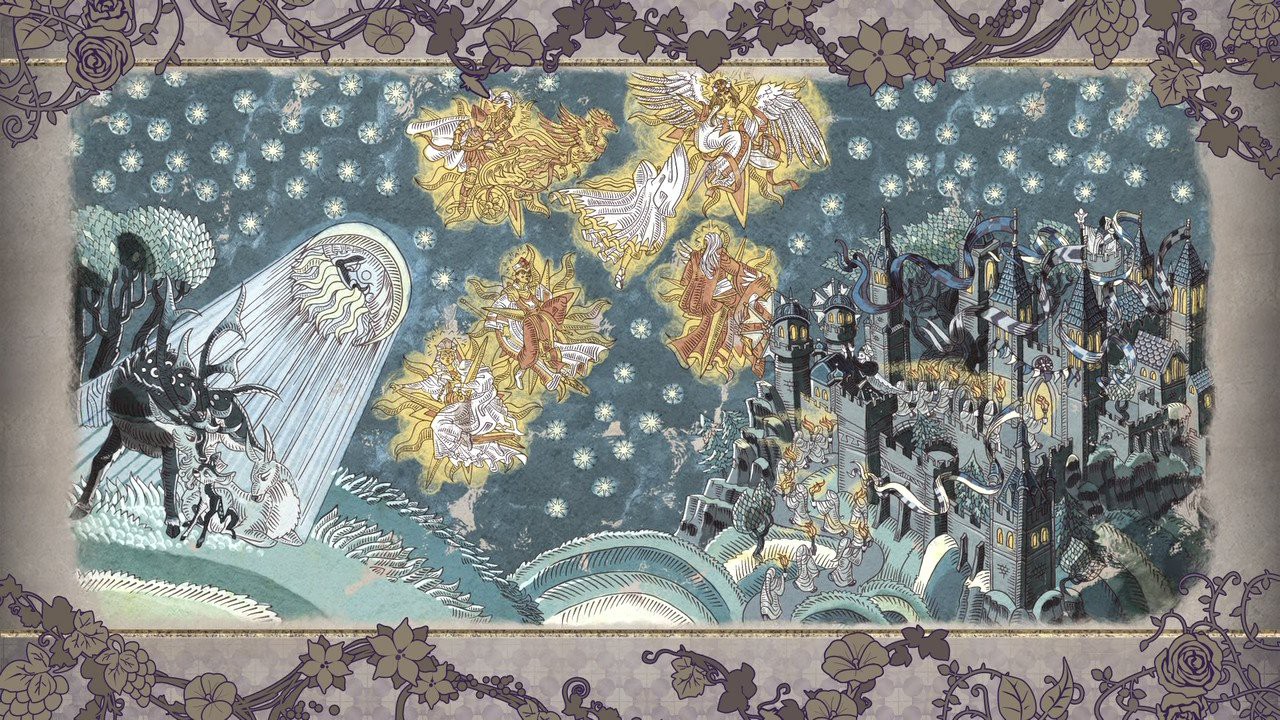
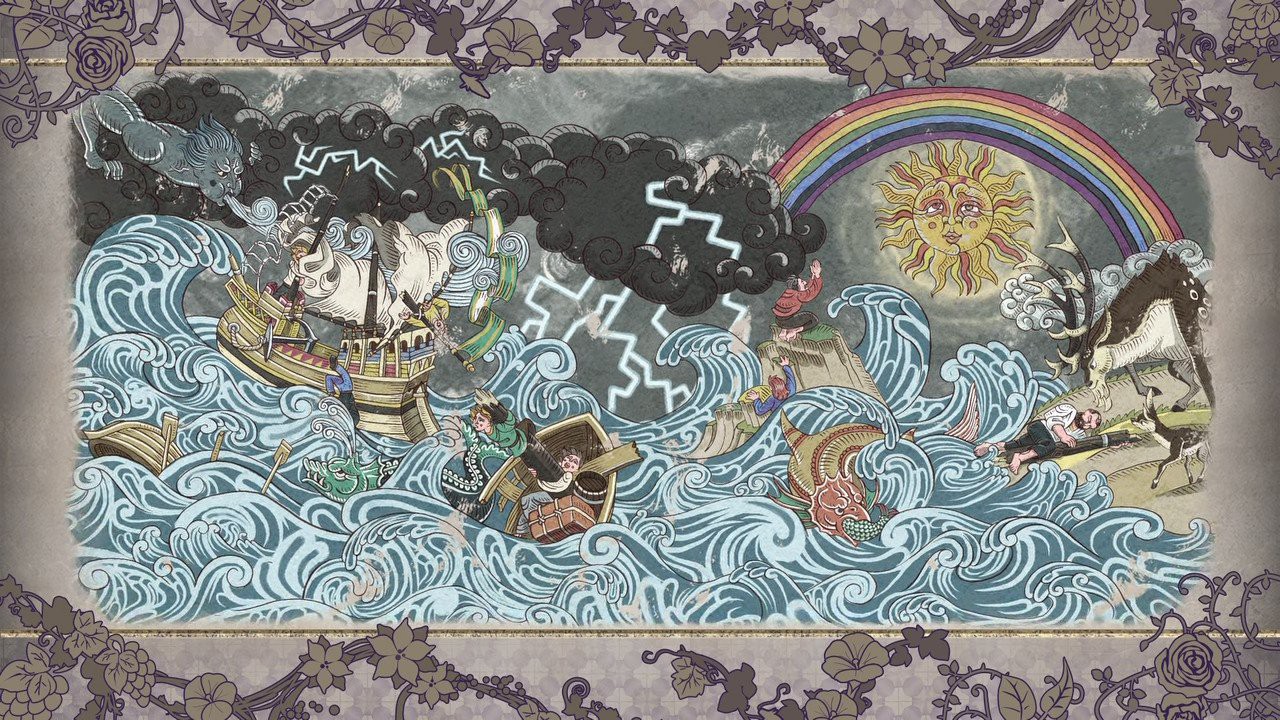
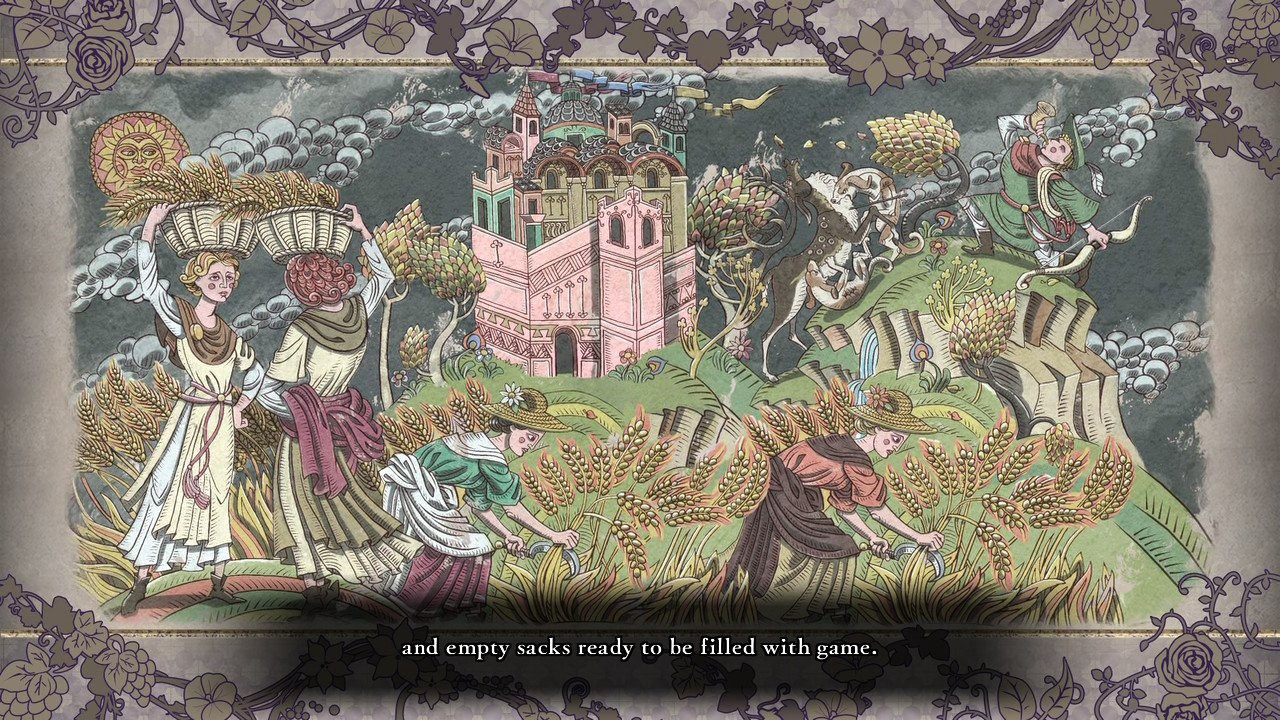

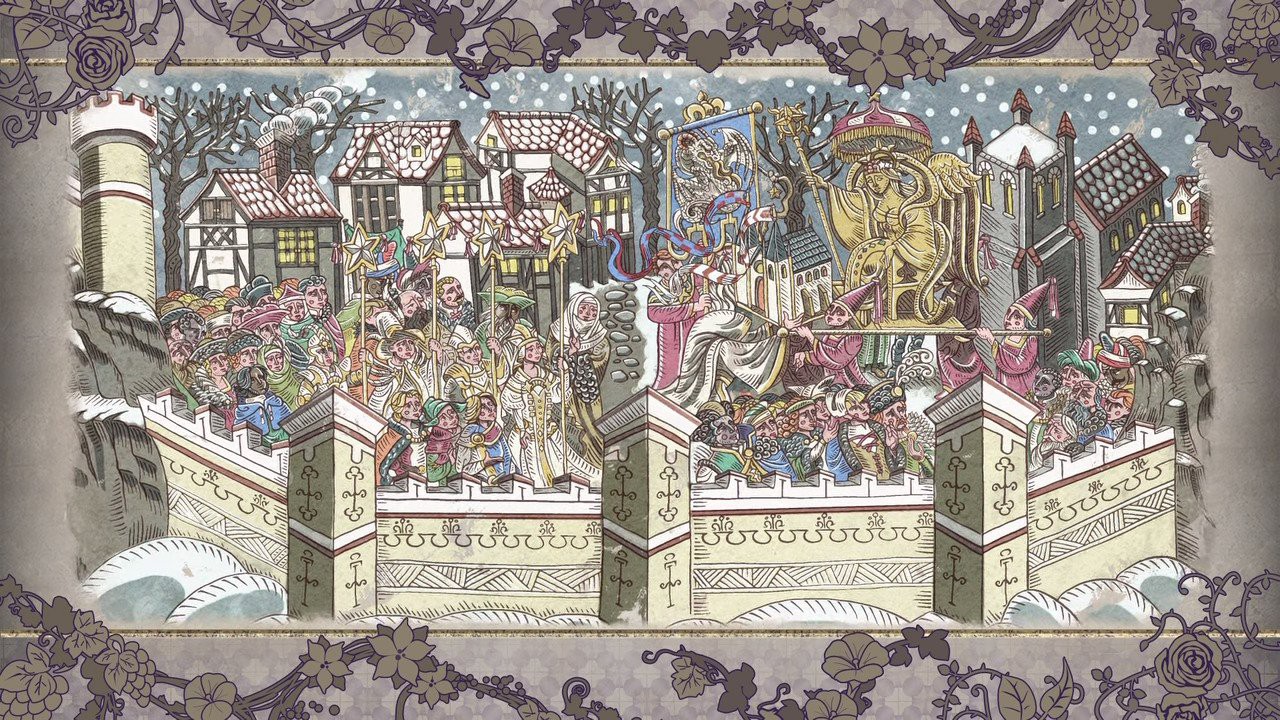
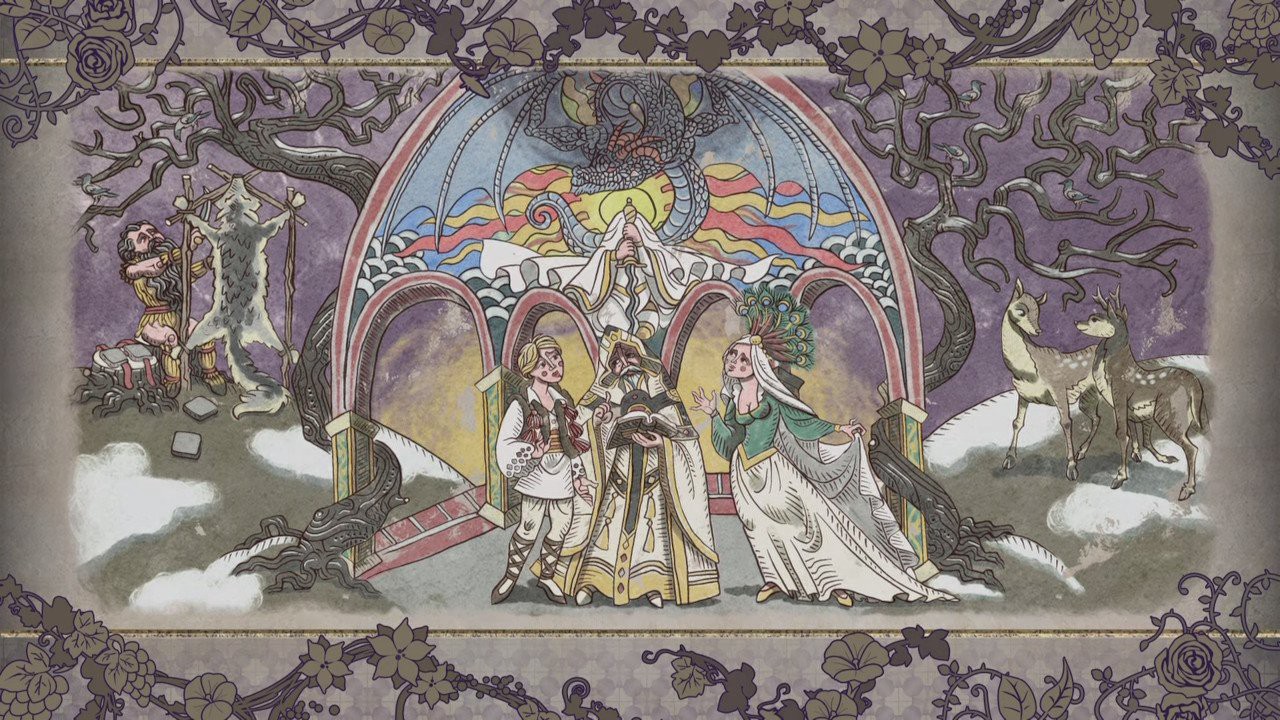
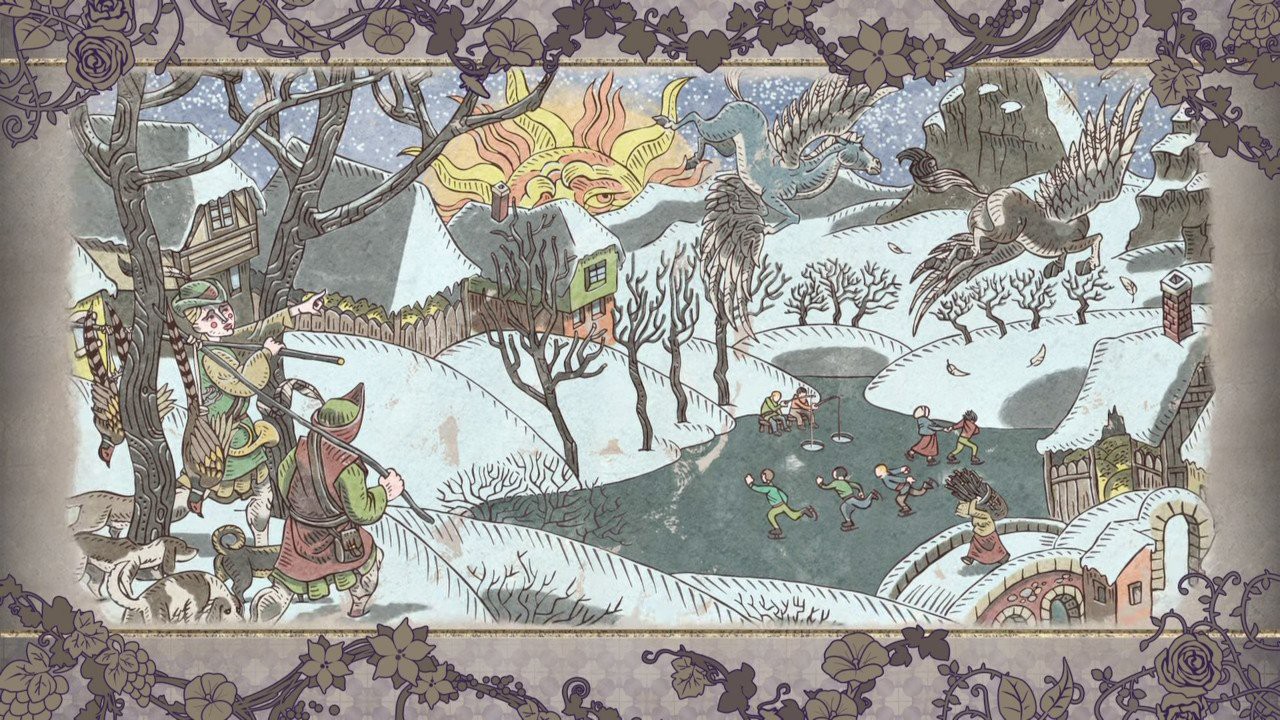
 All images were taken via Nintendo Switch screen capture.
All images were taken via Nintendo Switch screen capture.
I love everything about these images. I love how different the art style is depending on the weather (some of the night scenes look like something out Van Gogh). I love how each season has its own unique vibe. I also love the strangeness of some of the individual scenes within these compositions. Why is the lady crying into a curtain? Why are the rabbits cowering in fear underneath in a cave?
But even if you have only a passing knowledge of art history, look at Fire Emblem: Three House?s artwork long enough and you begin to see some similarities with other famous pieces of art. It should be noted that I am not an art historian, but even my amateur eye has caught a few borrowings. I should also emphasize that I do not think these borrowings and allusions diminish Intelligent Systems? art; on the contrary, I think it is cool Fire Emblem?s artists invoked classic pieces of art. In trying to give Fire Emblem: Three Houses a medieval ?Western? feel, it is only natural that they turn to some of the most illustrious works in the Western tradition.
It is apparent that the artists at Intelligent Systems are fans of the Italian Renaissance painter Sandro Botticelli (1445?1510). Given the ruddy complexions of the people within these pieces of art, Botticelli?s tendency to portray glowing and flush faces would have obvious appeal. But there are more specific allusions to Botticelli in Fire Emblem: Three Houses. Look at, for instance, the scene of the maidens dancing:

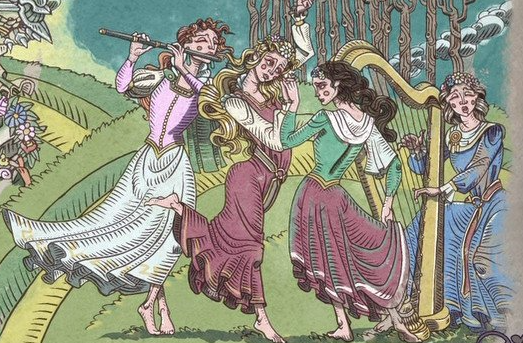
This looks very, very similar to a scene in Botticelli?s Spring (c. 1480), right down to the hand gestures.
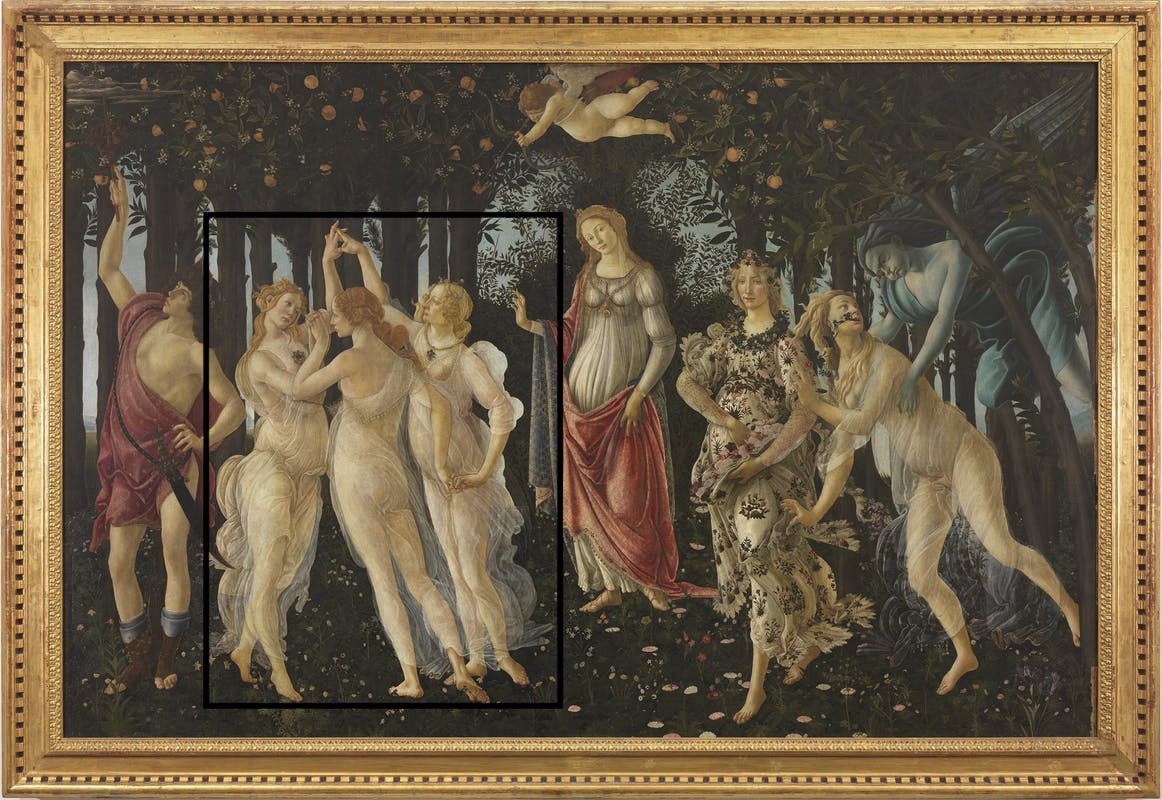 Image courtesy of The Uffizi Museum. Black box added by the author.
Image courtesy of The Uffizi Museum. Black box added by the author.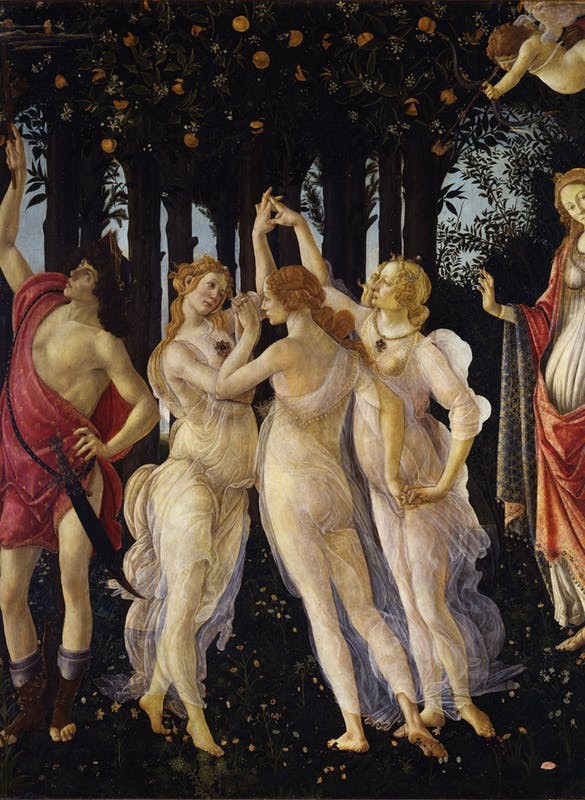 Image courtesy of The Uffizi Museum
Image courtesy of The Uffizi Museum
And Intelligent Systems even borrows from the most famous Botticelli painting of them all, the Birth of Venus (ca. 1485). Look at the similarity between the winds in both:
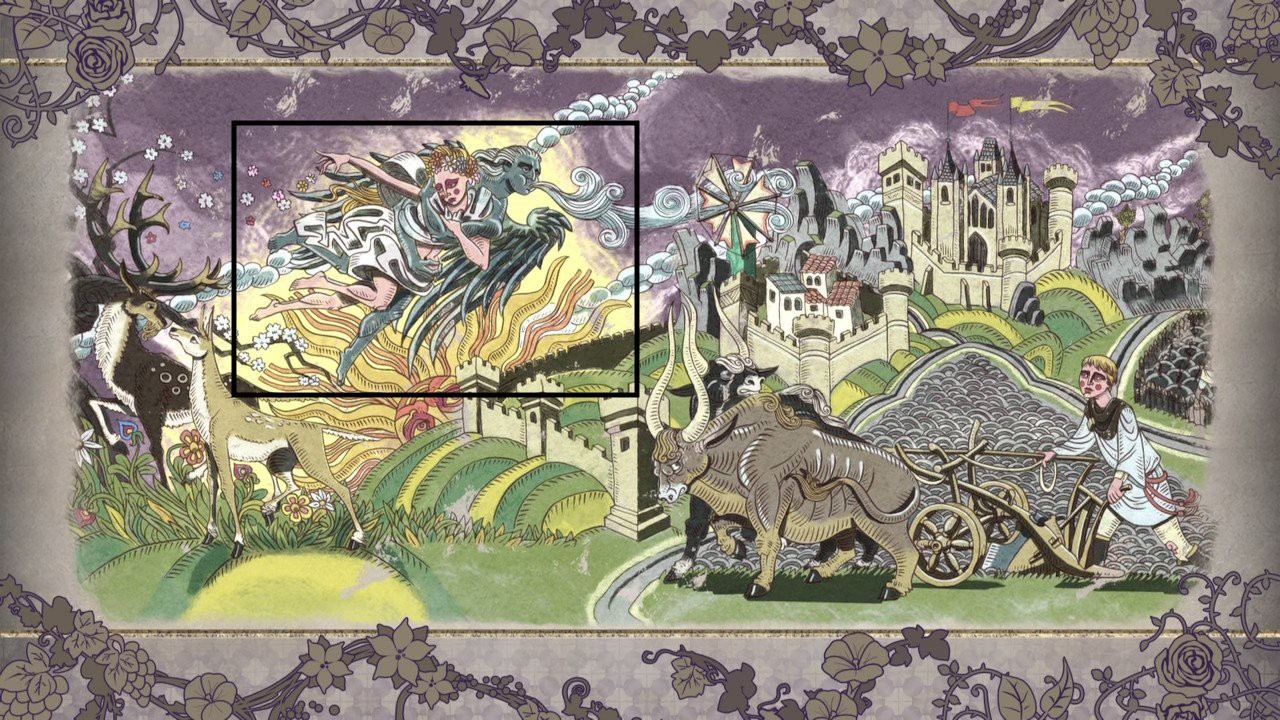
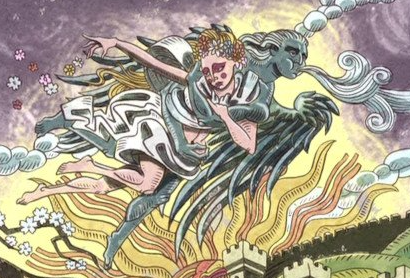
 Image courtesy of The Uffizi Museum. Black box added by the author.
Image courtesy of The Uffizi Museum. Black box added by the author. Image courtesy of The Uffizi Museum.
Image courtesy of The Uffizi Museum.
Unsurprisingly for a Japanese game, the influences are not just Western. Take a look at the waves in the depiction of the sea storm. They bear more than a passing resemblance to the most famous woodblock print of Japanese art, Katsushika Hokusai?s Under the Wave off Kanagawa (ca. 1830?2). Compare:
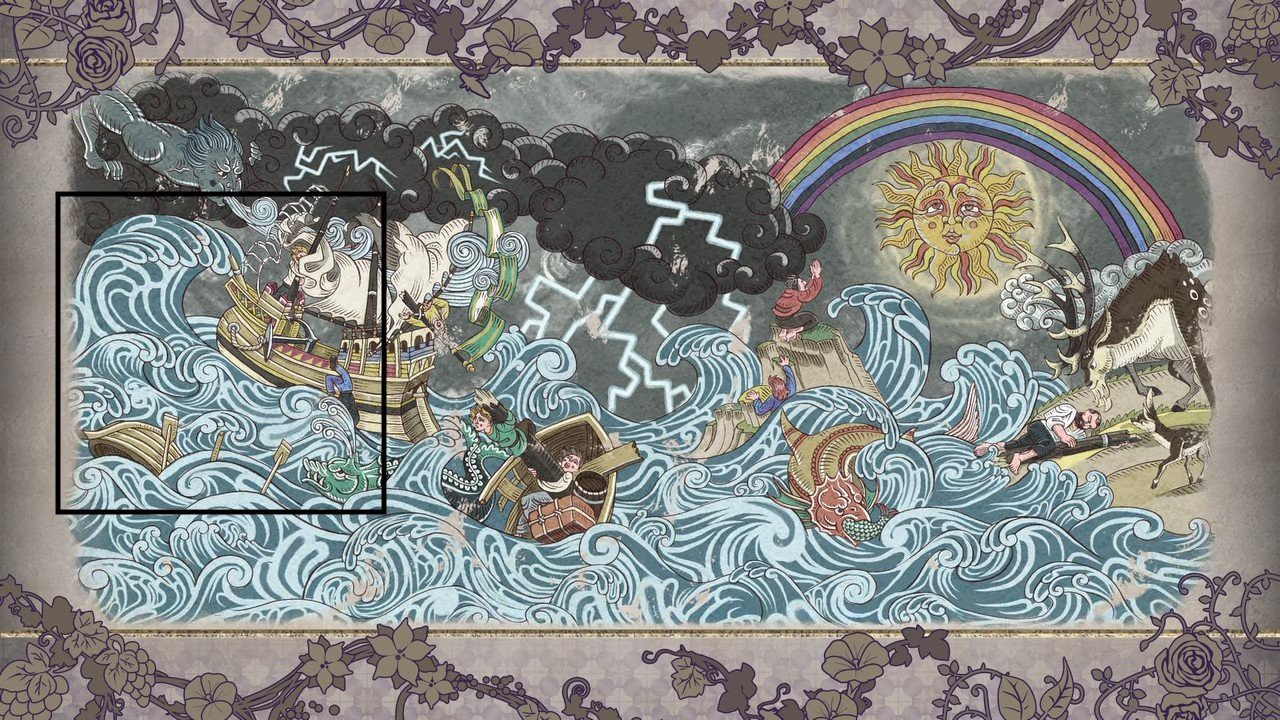
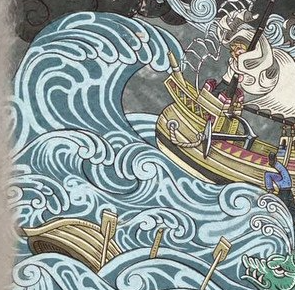
 Image via The Met.
Image via The Met.
The sea monsters in this scene also seem to be more Japanese-inflected (actual medieval sea monsters look dumpy by comparison). The sea monsters in the Fire Emblem: Three Houses art looks like something out of One Piece.
 A medieval sea monster (image via Smithsonian Magazine).
A medieval sea monster (image via Smithsonian Magazine).
I am sure there are many more influences and references in these pictures. What artistic influences do you see in these images?
